Traveling, whether for business or pleasure, introduces an exciting element of the unknown. We look forward to new experiences, but we also inherently accept a degree of vulnerability. In a world where personal security extends beyond just locking the front door, modern travelers are increasingly seeking reliable, temporary surveillance solutions. The search for the best portable security camera for travel has become a crucial element of packing lists, right alongside passports and chargers.
A true travel security camera must strike a delicate balance: it needs to be powerful enough to provide clear evidence and timely alerts, yet compact and easy enough to deploy in a matter of seconds. It shouldn’t require professional installation or complex wiring. This comprehensive guide will dissect the essential features, necessary trade-offs, and crucial considerations to help you select the perfect companion for keeping watch when you can’t.
Contents
- 1 Why Travel Security Cameras Are Essential Today
- 2 Key Features That Define the Best Portable Security Camera for Travel
- 3 Different Types of Portable Security Solutions
- 4 Crucial Considerations for Specific Travel Scenarios
- 5 Advanced Features: Going Beyond Basic Monitoring
- 6 Installation, Setup, and Privacy Concerns
- 7 Top Recommendations: What Makes a Camera the Best?
- 8 Final Thoughts on Choosing Your Travel Surveillance Partner
Why Travel Security Cameras Are Essential Today
The days when a simple door wedge sufficed for security are rapidly fading. While standard hotel security is generally reliable, travelers often rely on short-term rentals, shared accommodations, or extended stays where oversight is minimal. Having a dedicated, discreet monitoring system provides an invaluable layer of protection, ensuring the safety of your belongings and, more importantly, your personal well-being.
The Need for Temporary Surveillance
When you check into an Airbnb or a hotel room, you are entering a space where multiple people—cleaning staff, maintenance workers, or previous guests—have had access. While malicious activity is rare, peace of mind is priceless. A portable security camera for travel allows you to monitor entry points, keep an eye on infants or pets left briefly in the room, or confirm the integrity of your personal space while you are out exploring.
Furthermore, many travelers own items that are high-value and easily transportable, such as expensive camera equipment, laptops, or jewelry. Having a visible or even covert travel surveillance camera acts as both a deterrent and a critical tool for evidence collection should the worst occur. The modern traveler is proactive, and technology provides the means to control one’s environment, even when temporary.
Protecting Privacy and Valuables
Beyond standard theft prevention, specific applications demand a reliable, temporary camera solution. For instance, those who need the best security camera for vacation home monitoring often require a system that can be deployed quickly upon arrival and removed upon departure, or one that can be left dormant for extended periods without needing constant maintenance.

The ability to check in remotely is perhaps the most significant benefit. Imagine enjoying dinner out and receiving an instant alert on your phone indicating motion in your room. This immediate notification capability is what separates a basic camera from the best portable security camera for travel—it offers real-time situational awareness, allowing you to react instantly, whether that means calling the front desk or local authorities.
Key Features That Define the Best Portable Security Camera for Travel
When evaluating the market, the sheer volume of options can be overwhelming. To narrow down the field, we must focus on features specifically tailored to the transient nature of travel and the unique demands of temporary surveillance.
Battery Life and Power Options
In a hotel or rental, access to convenient power outlets is often limited, and running long charging cables defeats the purpose of discreet deployment. Therefore, exceptional battery life is arguably the most critical feature. The best portable security camera for travel should offer several days of standby time and, crucially, the ability to record for many hours continuously or when triggered by motion.
Look for devices that utilize rechargeable, high-capacity lithium-ion batteries. Furthermore, consider cameras that can be easily powered by a standard USB battery pack (power bank). This allows for rapid recharging on the go and extends surveillance time significantly without needing to be tethered to a wall socket. The ideal solution provides flexibility—wall power when available, but long-lasting battery power when discretion or remoteness is necessary.
Compactness and Discreet Design
The essence of a successful travel surveillance camera lies in its size and concealment. Large, bulky cameras are easily spotted and removed. The top contenders in this category are often miniature cube cameras or devices cleverly disguised as everyday objects (like USB chargers or alarm clocks).
A camera should be lightweight enough not to add significant bulk to your luggage and small enough to fit into a pocket or small compartment. Discretion is key, not just for covert monitoring, but also because many short-term rental agreements prohibit the installation of permanent security systems. A highly compact and easily deployable travel security camera respects these temporary boundaries while still providing robust monitoring capabilities.
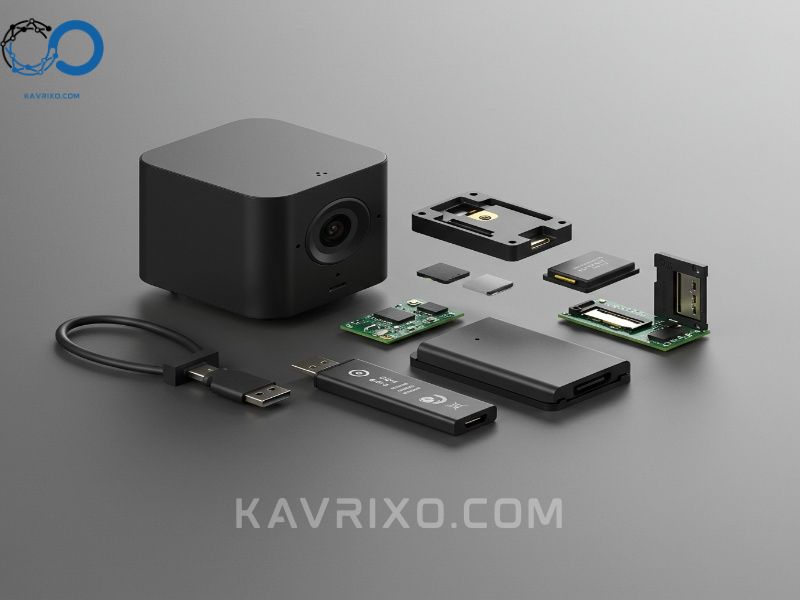
Connectivity and Wi-Fi Dependency
Connectivity is a major differentiator. Most modern security cameras rely on Wi-Fi connectivity to stream video to your phone and send push notifications. While this is ideal, it presents a challenge in travel scenarios: you are constantly switching networks, and sometimes, the available Wi-Fi is unreliable or requires complex authentication (e.g., hotel captive portals).
The best portable security camera for travel offers flexibility:
- Wi-Fi Required: Best for real-time streaming and cloud backup, assuming stable network access.
- Access Point Mode (P2P): Allows the camera to create its own local Wi-Fi hotspot. You won’t get remote access when you leave the building, but you can view the live feed and download recordings directly to your phone when you are within close range (typically 30-50 feet). This is excellent for monitoring pets or kids while you step out briefly.
- Local Recording Only: Perfect for situations where no Wi-Fi is available at all. The camera records motion-triggered events directly onto an onboard MicroSD card, which you can retrieve and review later. This ensures continuous recording capability regardless of local network conditions.
Storage Solutions (Cloud vs. Local)
How footage is stored directly impacts usability and cost.
Local Storage (MicroSD Cards)
Local storage is often preferred by travelers due to its simplicity and zero subscription cost. A camera that supports a high-capacity MicroSD card (e.g., 128GB or 256GB) can store weeks of motion-activated footage. For a portable security camera for travel, local storage is faster, more reliable in areas with poor internet, and keeps your data entirely private. However, if the camera is stolen, the footage is lost.
Read more: The Ultimate Guide to Finding the Best HomeKit Security Camera
Cloud Storage
Cloud storage provides redundancy; even if the camera is destroyed or stolen, the footage is safely stored remotely. The major drawback for travelers is the reliance on high-speed, stable Wi-Fi—a luxury not always afforded by budget hotels or remote vacation properties. Furthermore, cloud plans usually require a monthly subscription fee, which adds to the lifetime cost of the device. Many travelers opt for a hybrid solution: local storage for primary recording, with a small cloud buffer if Wi-Fi allows.
Resolution and Field of View (FOV)
Clear, usable footage is non-negotiable. While 4K resolution is becoming common, 1080p (Full HD) is generally sufficient for identifying faces and crucial details, provided the frame rate is smooth (at least 15-20 frames per second). Higher resolutions consume battery power and storage space much faster, so 1080p often provides the optimal balance for a travel surveillance camera.
Read more: Deconstructing ADT Surveillance Camera Prices: A Comprehensive 2025 Cost Guide
Equally important is the Field of View (FOV). A wide-angle lens (120 to 150 degrees) is essential, as it allows a single, small camera to cover an entire hotel room or a significant portion of a living space in a vacation home. A narrow FOV requires multiple cameras or limits coverage to just a doorway.
Different Types of Portable Security Solutions
The umbrella term “portable security camera for travel” encompasses several distinct form factors, each suited to different requirements regarding discretion and functionality.
Mini Cube Cameras
These are the quintessential travel cameras. Often measuring less than 1.5 inches on each side, they are highly discreet and can be placed almost anywhere—on a bookshelf, hidden among toiletries, or mounted temporarily using magnetic bases. Their primary strengths are size and ease of deployment. They usually rely heavily on internal batteries and MicroSD cards, making them the ideal choice when looking for covert, localized monitoring.
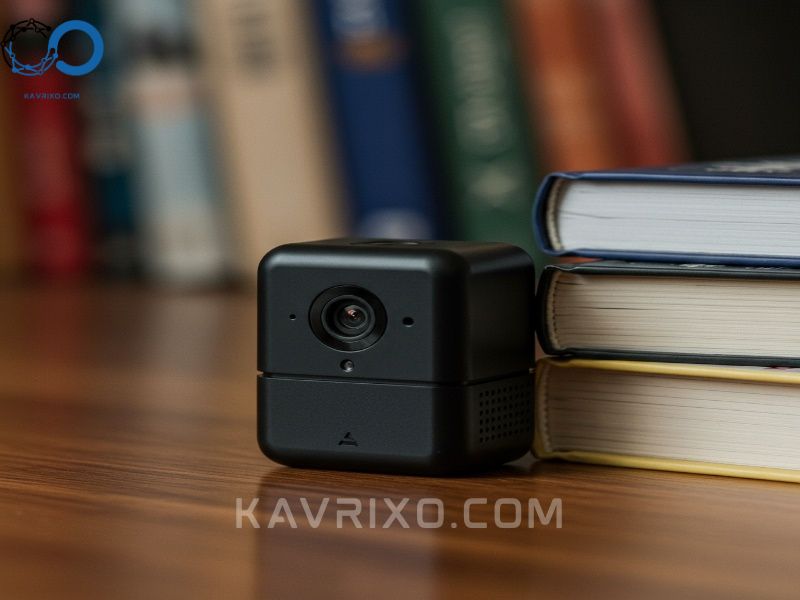
Battery-Powered Stick-Up Cameras
These are bulkier than cube cameras but offer vastly superior battery life (sometimes months) and often include professional features like improved motion sensors and integrated lighting. Brands like Blink or certain Ring models fall into this category. They are perfect for monitoring larger temporary spaces, such as the perimeter of a rental cabin or serving as the best security camera for vacation home monitoring during off-season periods. Their size makes them less discreet, but their extended functionality often outweighs this drawback.
USB Charger Cameras
For maximum concealment, cameras built into functional items like USB wall chargers are highly effective. Since wall chargers are ubiquitous in travel environments, they blend seamlessly into the background. They have the added benefit of being constantly powered when plugged in, eliminating battery concerns. However, their angle is fixed by the outlet location, limiting the flexibility of the field of view.
Dedicated Travel Surveillance Cameras
Some manufacturers have designed systems specifically for transient use. These often come with specialized mounting accessories (like flexible tripods or tension clamps) and software optimized for rapid network changes. While potentially more expensive, these systems offer the most user-friendly experience for frequent travelers seeking the best portable security camera for travel that guarantees reliable connectivity across multiple locations.
Crucial Considerations for Specific Travel Scenarios
The “best” camera is context-dependent. The requirements for monitoring a small hotel room differ significantly from monitoring a large vacation property.
Monitoring Hotel Rooms and Airbnbs
In these scenarios, discretion and ease of setup are paramount. You need a device that can be deployed and removed within five minutes.
- Focus on: Size (mini cube cameras are ideal), local storage capability (in case the rental Wi-Fi is terrible), and night vision (hotel rooms are often completely dark).
- Key Challenge: Finding a suitable, unobtrusive placement that covers the primary entry door and sensitive areas (e.g., where wallets or passports are stored). Since you are likely present most of the time, motion-activated recording is key to maximizing battery life.
The Best Security Camera for Vacation Home Monitoring
When you are looking for the best security camera for vacation home use, the criteria shift toward longer-term reliability, weather resistance (if monitoring exteriors), and advanced features.
- Focus on: Extended battery life (weeks, not hours), robust Wi-Fi connectivity (you can often set up a reliable local network), and possibly cellular connectivity (LTE) if the home is in a remote area without landline internet.
- Key Challenge: Covering large areas. You might need a modular system where multiple cameras link to a central hub, or a single camera with a very wide, motorized pan/tilt capability. The ability to endure temperature fluctuations is also necessary if the home is left vacant for months.
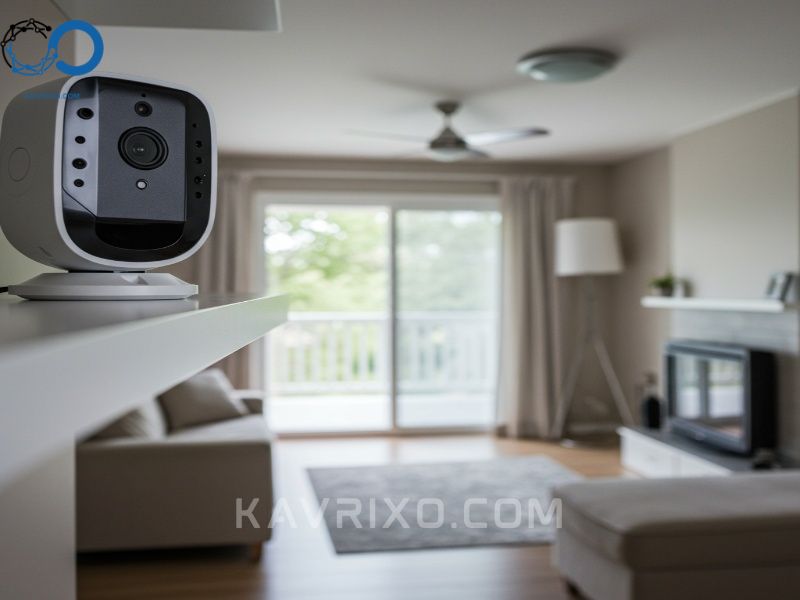
Road Trips and Vehicle Surveillance
Travel isn’t always stationary. For RVs, camper vans, or extended road trips, surveillance needs often include monitoring the vehicle interior or the campsite perimeter.
- Focus on: Magnetic mounting options, shock resistance, and the ability to operate effectively in low-light conditions outside the vehicle. Powering via a car’s USB port or cigarette lighter socket becomes a viable option here, reducing reliance on internal batteries. Cameras with built-in GPS tracking or features that integrate with vehicle alarms are highly valuable in this specific niche.
Advanced Features: Going Beyond Basic Monitoring
Once the fundamental requirements (battery, size, storage) are met, the next tier of features elevates a good camera to the best portable security camera for travel.
Two-Way Talk and Siren Functionality
While discretion is often desired, sometimes immediate communication or deterrence is necessary. Two-way talk functionality allows you to speak through the camera’s speaker via your smartphone. This is excellent for checking in with a child or pet, or for verbally challenging an intruder before they can cause damage.
Some high-end models also include a remote-activated siren. If you receive a motion alert and confirm unauthorized access, triggering a loud, piercing siren can often scare away intruders immediately, making this a powerful deterrent feature for any serious travel surveillance camera.
Advanced Motion Detection (AI Human/Pet Detection)
Standard motion detection often results in false alarms caused by light changes, curtains swaying, or insects flying by the lens. These constant false alerts quickly render a security system useless, especially when traveling across time zones.
The best portable security camera for travel incorporates Artificial Intelligence (AI) to differentiate between human shapes, pets, and environmental motion. This “smart detection” significantly reduces unnecessary notifications, ensuring that when your phone buzzes, it’s genuinely important. This feature is particularly crucial for monitoring the perimeter of a vacation home where wildlife or changing weather might otherwise trigger countless alerts.
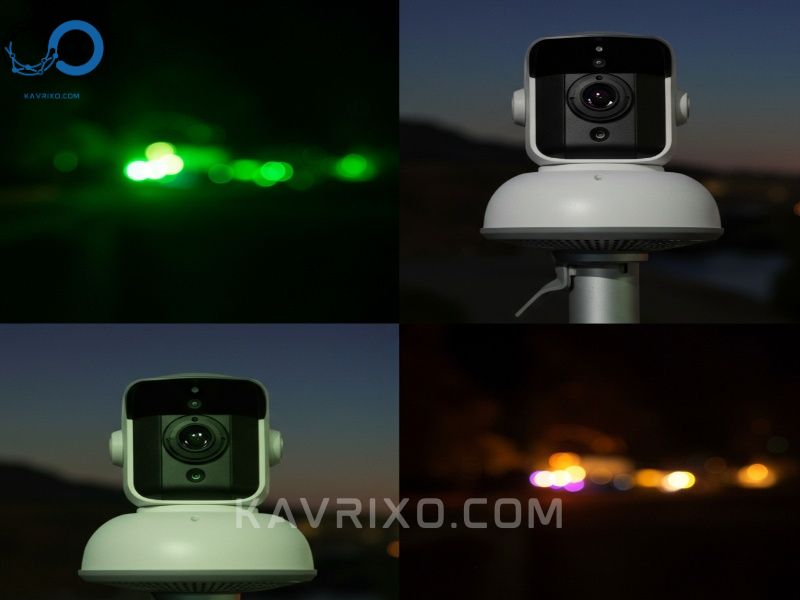
Night Vision Capabilities
Since most security incidents occur under the cover of darkness, robust night vision is essential. Most standard portable cameras use Infrared (IR) LEDs, which provide clear black-and-white footage in zero light.
For superior performance, look for cameras offering:
- Invisible IR: Some cameras use 940nm IR LEDs instead of the standard 850nm. While the range is slightly shorter, the 940nm LEDs do not emit a faint red glow, making the camera completely undetectable in the dark—a huge advantage for discretion.
- Color Night Vision: Achieved either through extremely sensitive sensors that utilize minimal ambient light or through built-in spotlights. Color footage provides much better detail for identifying clothing or objects than standard black-and-white images.
Installation, Setup, and Privacy Concerns
A camera designed for travel must prioritize rapid deployment. If setup takes longer than five minutes, it’s not truly portable.
Easy Setup and Portability
Look for cameras that connect via QR code scanning or Bluetooth pairing rather than requiring manual input of long Wi-Fi passwords. The mounting system should rely on magnets, clamps, or adhesive pads that are temporary and won’t damage surfaces. The ability to quickly reset the camera and connect it to a new Wi-Fi network is a core requirement for any frequently moving portable security camera for travel.
Legal and Ethical Use of a Travel Security Camera
It is imperative to address the legal and ethical implications of using a travel surveillance camera. Laws regarding consent for recording vary dramatically by state and country.
- Private Spaces: In most jurisdictions, it is illegal to record in areas where an expectation of privacy exists (e.g., bathrooms or bedrooms). When using a camera in a rental, always focus on common areas or entry points.
- Disclosure: While not always legally required in hotel rooms you fully rent, if you are utilizing an Airbnb or short-term rental, common courtesy and often the rental platform’s terms of service require you to disclose the presence of any recording devices to the host and fellow guests. Even if the camera is off, its mere presence might need to be noted.
Using your device ethically ensures you maintain your privacy without violating the privacy of others.
Top Recommendations: What Makes a Camera the Best?
The ideal best portable security camera for travel combines several key attributes:
- Size: Smaller than a tennis ball.
- Power: Minimum of 6 hours continuous recording, 7 days standby, or support for external power banks.
- Storage: Reliable MicroSD card support (128GB minimum).
- Intelligence: AI motion detection to eliminate false alarms.
- Discretion: Matte black finish, minimal indicator lights, and invisible IR night vision.
Brands that frequently excel in this space include specialized mini-cam manufacturers alongside mainstream companies that have adapted their compact models (like certain battery-powered indoor cameras) specifically for their ease of relocation.
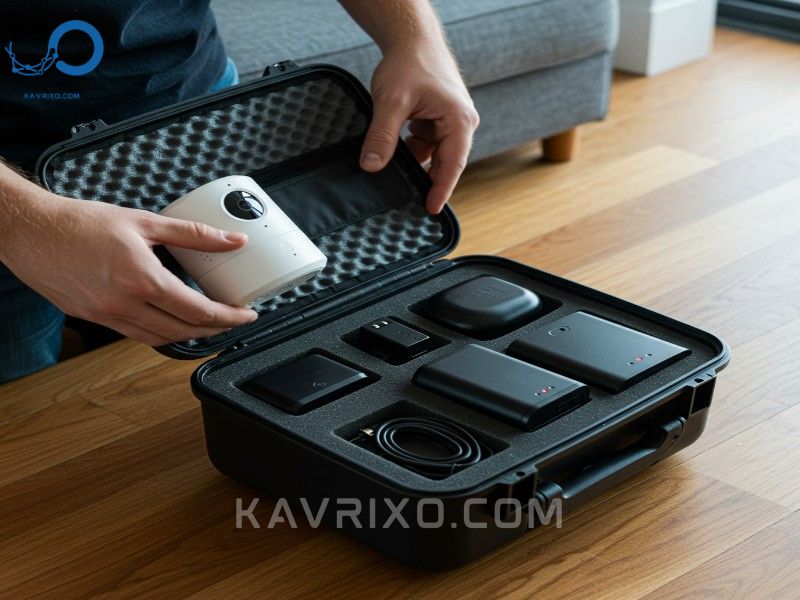
Final Thoughts on Choosing Your Travel Surveillance Partner
Selecting the best portable security camera for travel is a personal decision based entirely on your travel style and security priorities. Are you a minimalist backpacker prioritizing discretion and battery life above all else? Or are you a frequent vacation home renter needing a robust, long-term monitoring solution?
By focusing on the non-negotiables—battery longevity, easy setup, and reliable local storage—you ensure that your chosen device is a tool of empowerment, not a source of frustration. A high-quality travel security camera is more than just a piece of technology; it is an investment in peace of mind, allowing you to relax and fully enjoy your journey, confident that your temporary residence is protected. Travel safely, and travel securely.
